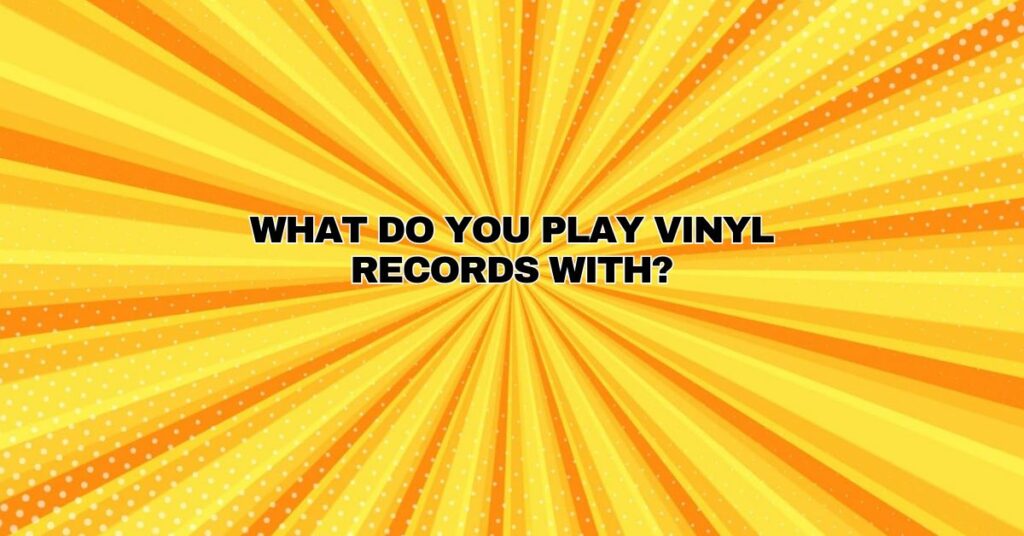Vinyl records, often affectionately referred to as “vinyl,” have experienced a remarkable resurgence in popularity, captivating audiophiles, collectors, and music enthusiasts worldwide. The unique analog sound, tactile experience, and nostalgia associated with vinyl records have made them a cherished format for music playback. To enjoy vinyl records to their fullest potential, you need a turntable, or record player, as it’s commonly known. In this comprehensive article, we will delve into the world of vinyl playback, exploring what a turntable is, how it works, and the key components involved in playing vinyl records.
The Turntable: Heart of Vinyl Playback
A turntable, or record player, is the central component of a vinyl playback system. It’s the device responsible for reading the grooves on a vinyl record and converting them into an analog audio signal that can be amplified and played through speakers or headphones. Let’s explore the critical components and functions of a turntable:
- Platter: The platter is the rotating surface on which the vinyl record rests. It spins at a consistent speed, typically 33 1/3 RPM (revolutions per minute) for LP records and 45 RPM for 7-inch singles. The platter’s smooth rotation is essential for accurate playback.
- Tonearm: The tonearm is the arm-like structure that holds the phono cartridge and stylus. It’s responsible for accurately tracking the grooves on the vinyl record and transmitting the vibrations to the cartridge.
- Phono Cartridge: The phono cartridge is a small transducer that converts the mechanical vibrations from the stylus (needle) into an electrical signal. There are various types of cartridges, including moving magnet (MM) and moving coil (MC), each with its unique characteristics.
- Stylus (Needle): The stylus, often called the needle, is a tiny diamond-tipped component at the end of the tonearm. It makes contact with the grooves on the vinyl record, tracing the undulations in the surface and translating them into electrical signals.
- Tonearm Counterweight: The tonearm counterweight is used to balance the tonearm and set the tracking force of the stylus on the record. Proper tracking force ensures accurate playback and minimizes wear on the record and stylus.
- Anti-Skate Mechanism: The anti-skate mechanism counteracts the lateral force that pulls the tonearm toward the center of the record. It helps maintain consistent tracking across the entire record surface.
- Drive Mechanism: Turntables can have various drive mechanisms, including belt drive and direct drive. These mechanisms determine how the platter is powered and can influence factors like speed stability and vibration.
- Speed Control: Turntables feature speed controls that allow users to switch between 33 1/3 RPM and 45 RPM for playing different types of vinyl records. High-end turntables may offer additional speed options for playing 78 RPM records.
- Dust Cover: Many turntables come with a dust cover (also known as a lid) to protect the turntable and vinyl record from dust and debris when not in use.
- Output Connection: Turntables have output connections, such as RCA or XLR, that allow you to connect them to an amplifier or receiver. Some turntables also feature a built-in phono preamp, while others require an external phono preamplifier.
Components for Playing Vinyl Records
In addition to the turntable itself, several essential components are required for playing vinyl records:
- Amplifier or Receiver: The electrical signal generated by the phono cartridge is very weak and needs amplification. An amplifier or receiver with a phono input (phono stage) is typically used to boost the signal to a suitable level for playback.
- Speakers or Headphones: To hear the audio from vinyl records, you’ll need speakers or headphones connected to your amplifier or receiver. The choice of speakers can significantly impact the sound quality of your vinyl playback.
- Vinyl Records: Of course, you’ll need vinyl records to play! Vinyl records come in various sizes and formats, including 12-inch LPs (Long Play), 7-inch singles, and 10-inch records, each with its unique grooves and playback speed.
- Cleaning Supplies: Proper maintenance and cleaning of both the vinyl records and the stylus are crucial for preserving audio quality and prolonging the life of your records and equipment. Cleaning brushes, record cleaning solutions, and stylus brushes are common tools used for this purpose.
Listening to Vinyl Records
To enjoy vinyl records, follow these general steps:
- Set Up Your Turntable: Ensure that your turntable is correctly set up, including proper leveling and alignment of the cartridge and stylus.
- Choose a Record: Select a vinyl record from your collection and place it on the platter.
- Adjust Playback Speed: If necessary, adjust the turntable’s playback speed to match the speed of the record (e.g., 33 1/3 RPM for LPs or 45 RPM for singles).
- Cue the Stylus: Gently lower the stylus onto the desired track on the record using the tonearm’s cueing lever.
- Enjoy the Music: As the stylus follows the grooves on the vinyl, the turntable will produce the audio signal, which is amplified by your amplifier or receiver and played through your chosen speakers or headphones.
- Care and Maintenance: After listening, carefully lift the tonearm, return it to its resting position, and clean the stylus and record as needed to preserve their condition.
Conclusion
Playing vinyl records is a deeply rewarding and sensory experience, offering a unique connection to the music and a sense of nostalgia that resonates with many music enthusiasts. The turntable, along with its essential components, plays a central role in bringing the analog magic of vinyl to life. Whether you’re a seasoned vinyl collector or a newcomer to the world of vinyl, understanding the components and principles of vinyl playback can enhance your appreciation of this timeless format. So, dust off your records, set up your turntable, and immerse yourself in the rich, warm sounds of vinyl records.


